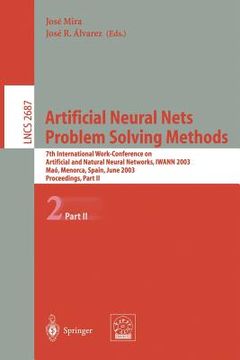Share
artificial neural nets. problem solving methods: 7th international work-conference on artificial and natural neural networks, iwann 2003, mao, menorca
José Mira
(Illustrated by)
·
José R. Alvarez
(Illustrated by)
·
Springer
· Paperback
artificial neural nets. problem solving methods: 7th international work-conference on artificial and natural neural networks, iwann 2003, mao, menorca - Mira, José ; Alvarez, José R.
Out of Stock
We'll email you when the book is available again
Synopsis "artificial neural nets. problem solving methods: 7th international work-conference on artificial and natural neural networks, iwann 2003, mao, menorca"
The global purpose of IWANN conferences has been to provide a broad and - terdisciplinary forum for the interplay between neuroscience and computation. Our dream has been, and still is: (1) ?nd ways to understand the physiol- ical, symbolic and cognitive nature of the nervous system (NS) with the help of computational and engineering tools; and (2) ?nd rich and insightful sources of inspiration in biology, to develop new materials, mechanisms and probl- solving methods (PSM) of value in engineering and computation. As all of us knowwell, this dreamstarted with the AncientGreeks, reappearedin the fo- dational stage of neurocybernetics and bionics, and is now broadly accepted in the scienti?c community under di?erent labels such as computational neu- science(CN) andarti?cialneuralnets (ANN), orgenetic algorithmsandhybrid neuro-fuzzy systems. We have also to recognize that there is a considerable lack of credibility associated with CN and ANN among some researchers, both from biology and from the engineering and computation area. Potential causes of this scepticism could be the lack of methodology, formal tools, and real-world applications, in the engineering area, and the lack also of formal tools for cognitive process modeling. There is also the possibility of the computational paradigm being inappropriate to explain cognition, because of the "representational" character ofanycomputationalmodel. Some"moresituated"approachesarelookingback to the "neurophysiological epistemology" of the 1960's (mind in a body) to searchdirectlyforthemechanismsthatcouldembodythecognitiveprocess, and this means some fresh air for our old dream of connectionism.

